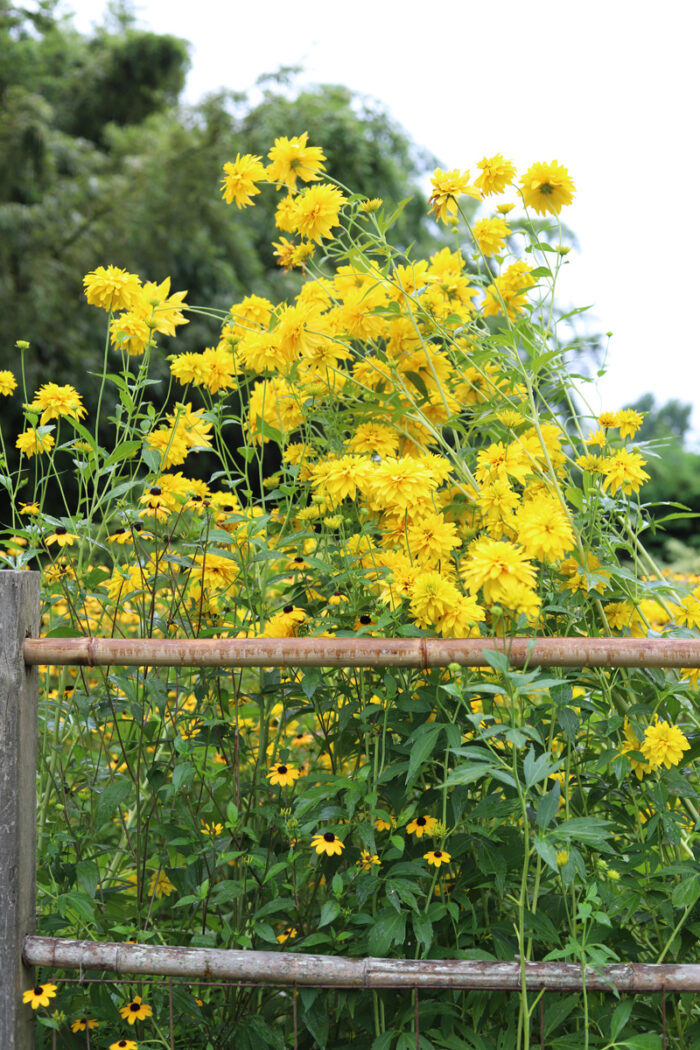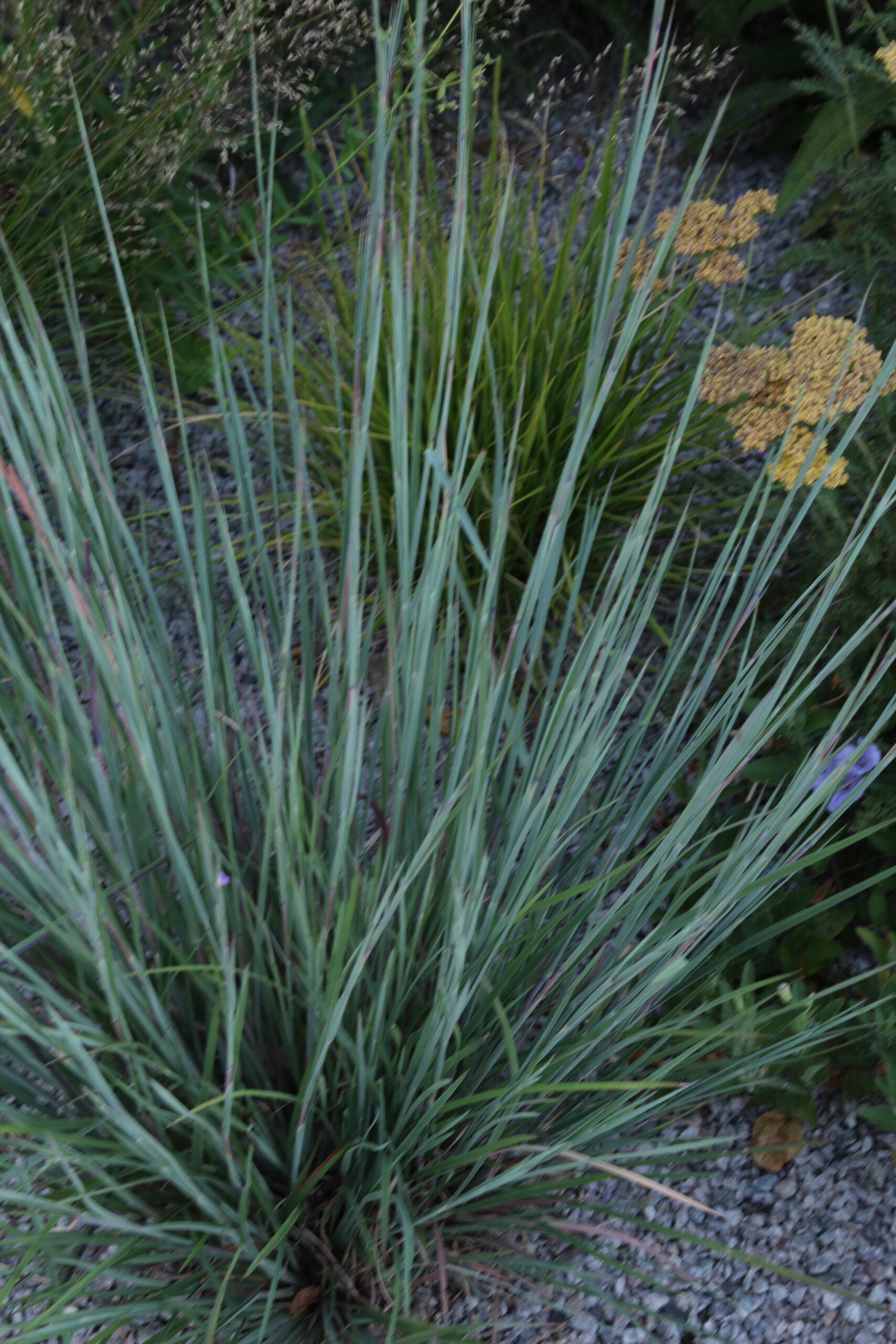
We’ve all been there: looking at plants in the nursery and impulsively bringing home something we are not familiar with and don’t have a plan for. These plants are sometimes a gift to our gardens, but many times, they become problems we wish we’d never purchased. Here are nine aggressive plants I advise new gardeners to stay away from to save them heartache in the future.
AVOID these plants |
|
 Golden Glow cut-leaf coneflowerRudbeckia laciniata ‘Hortensia’, Zones 3–9 Why to avoid it: This plant is not for a laid-back gardener—it is a beast. Every spring I dig out about half of the clump at the gardens where I work in Blithewold and toss it in the compost heap. It is an enthusiastic spreader that will take over everything in its way, and if not managed with force, this plant will outcompete everything around it. Additionally, Golden Glow is extremely tall and needs at least one big cutback in the summer (if not two or three) to keep it from towering to 7 feet tall and promptly flopping in the rain. |
 Cup plantSilphium perfoliatum, Zones 3–9 Why to avoid it: Many have ogled this statuesque, unusual plant. It has heft and height in the garden, which can be appealing. But those very traits are what make it a problem for your average homeowner. Cup plant needs a strong post to support its size and weight. It also drops thousands of seeds that germinate easily not only on bare ground but in every crack and crevice in stonework. The roots are difficult to remove if not dealt with at an early stage. This is a plant that will keep on spreading until you curse the day you brought it home. |
PLANT this instead: woodland sunflowerHelianthus divaricatus, Zones 3–8  Why to plant it: For both Golden Glow cut-leaf coneflower and cup plant, I recommend planting woodland sunflower as a substitute. While both previously mentioned plants are natives, woodland sunflower is a better-behaved New England native that is also beneficial to insects and birds. It’s drought tolerant and has the stunning yellow flowers we long for in high summer. |
|
AVOID this plant: yuccaYucca filamentosa, Zones 5–10  Why to avoid it: Now this may be controversial, but I am no fan of yucca. I don’t find it particularly lovely or worth its space in the garden. And, if you ever change your mind about the location of this plant (or whether you want it at all), it is incredibly difficult to remove. If one small piece of root is left in the soil, yucca will survive and thrive. You will find pieces sprouting in your garden for years after you dig out the original plant. |
PLANT this instead: little bluestemSchizachyrium scoparium, Zones 3–9  Why to plant it: If you want striking foliage in your garden, I recommend a native grass such as little bluestem. Learn more about our favorite native grasses here. |
AVOID this plant: privetLigustrum vulgare, Zones 4–7  Why to avoid it: This plant is so incredibly invasive. Yet it is still immensely popular and easy to find at big-box garden stores. Once you plant privet, it will sow itself into the surrounding area with a speed that is almost unmatched. It is resilient in the worst way and can find a home in almost any soil. |
PLANT this instead: winterberryIlex verticillata, Zones 3–9 Why to plant it: Put the pot of privet down and pick up a lovely winterberry instead. This native offers you the same type of deciduous green foliage and winter berries, but it feeds the birds and offers another level of beauty that brings joy to the heart during cold winter days. |
AVOID this plant: corkscrew willowSalix matsudana and cvs., Zones 4–8  Why to avoid it: Everyone thinks, “I am going to use that willow for so many fun projects! It will be worth having in my yard.” It will not. It will grow at a speed that you are not prepared for. Not only can it reach 30 feet in height, but it takes to pruning like an old friend, thriving with every cut. An industrial digger would be needed to remove corkscrew willow from the landscape. Even cutting it down would not stop its growth. Willows contribute an ingredient to rooting hormone, which means that they have everything they need to regrow. The roots also search out water sources and can find their way into your pipes. If you do plant a willow tree, please give it plenty of room and a home that will be permanent (and not too close to any buildings). |
AVOID this plant: Northern sea oatsChasmanthium latifolium, Zones 5–9  Why to avoid it: I am going to issue a rare warning for a native plant. Personally, I love sea oats. It’s beautiful, works well in flower arrangements, and dries nicely too. However, if you are not on board to evict huge patches of this plant every year, do not add it to your garden. The seed heads I love so much are, as their name implies, seeds. This grass belongs in meadows with other equally competitive plant companions. It is not a good addition to your average home garden. |
PLANT this instead: prairie dropseedSporobolus heterolepis, Zones 4–9  Why to plant it: Instead of Northern sea oats, try a more well-behaved grass such as prairie dropseed. Prairie dropseed is also a host for a variety of butterfly and moth species. Learn more about host plants here. |
AVOID this plant: variegated bishop’s weedAegopodium podagraria ‘Variegatum’, Zones 4–9  Why to avoid it: At my workplace we know a thing or two about bishop’s weed. It was planted when the original family lived here and did not know its habit of conquering every plant in its path. Many a visitor has asked about the lovely shady ground cover, only for the staff to quickly warn against ever planting any variation of it. You may hear a well-meaning nursery worker tell you the variegated form is less invasive than the straight species, but don’t believe it. It will become a cancer in your garden that you will likely never be able to fully remove. It spreads both via rhizome and seeds, making it double the headache. |
PLANT this instead: epimediumsEpimedium spp. and cvs., Zones 4–9  Why to plant it: My favorite low-growing plants for shade are epimediums. They are not fast spreading, but what they lack in speed, they more than make up for in beauty. There are seemingly endless varieties available on the market to satisfy every taste. See 27 Problematic Ground Covers for Shade and What to Plant Instead |
AVOID this plant: bambooPhyllostachys aureosulcata, Zones 4–9  Why to avoid it: Bamboo may seem like a good idea. The canes are harvestable and work well in many garden projects. It is a fast grower that can make a quick barrier between you and your closest neighbor. However, its virility is unmatched. This plant can send roots out 25 feet from the original clump, and it can grow through walkways and break through bricks. It will not be defeated. Not only will you have to live with bamboo for the rest of your life, but so will generations after you. Planting it is a mistake that will outlive you. If you need bamboo for a project, find a neighbor who has some already. I guarantee they will thank you for cutting some and taking it away. |
AVOID this plant: ‘Bampton’ verbenaVerbena officinalis var. grandiflora, Zones 7–10  Why to avoid it: A few years ago, my coworkers and I fell in love with a new verbena cultivar called ‘Bampton’. We ordered plants and seeds and carefully grew it in the garden. Three years later, I have found seedlings of this plant across a wide swath of the property in places I never expected. ‘Bampton’ needs a heavy hand to manage its enthusiastic habit. Multiple cutbacks during the growing season keep it to a manageable size. Spring editing removes many of the new baby plants that have found a home throughout the garden. Without this work, ‘Bampton’ quickly gets out of hand. The handsome purple foliage is beguiling, but do not heed its siren call. |
PLANT this instead: tall verbenaVerbena bonariensis, Zones 7–11  Why to plant it: I would stick with tall verbena (Verbena bonariensis, Zones 7–11). This also has a habit of seeding around, but in a more manageable manner. Tall verbena is also visited by many more pollinator species. I have hardly witnessed any pollinators interacting with ‘Bampton’. |
Whether native, nonnative, or plain invasive, some plants are more trouble than they are worth when it comes to a small home garden. Look for more well-behaved alternatives that will still be good additions to your design and your local ecosystem.
Betsy Ekholm is the gardens manager at Blithewold Manor, Gardens, and Arboretum in Bristol, RI.
Fine Gardening Recommended Products

The New Organic Grower, 3rd Edition: A Master's Manual of Tools and Techniques for the Home and Market Gardener, 30th Anniversary Edition
Fine Gardening receives a commission for items purchased through links on this site, including Amazon Associates and other affiliate advertising programs.

The Nature of Oaks: The Rich Ecology of Our Most Essential Native Trees
Fine Gardening receives a commission for items purchased through links on this site, including Amazon Associates and other affiliate advertising programs.

ARS Telescoping Long Reach Pruner
Fine Gardening receives a commission for items purchased through links on this site, including Amazon Associates and other affiliate advertising programs.




















Comments
Log in or create an account to post a comment.
Sign up Log in